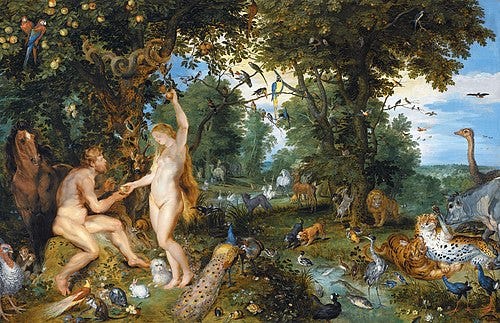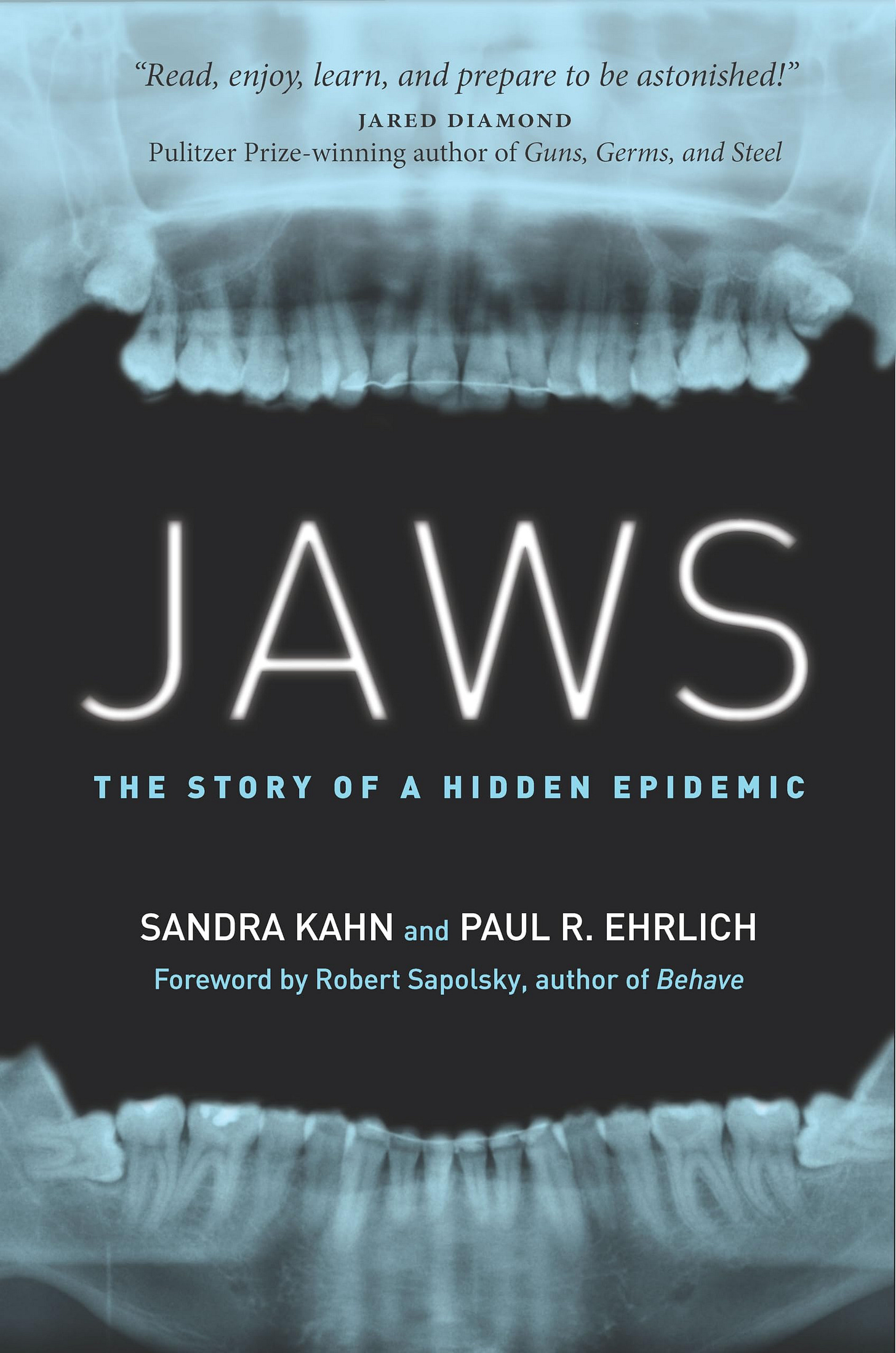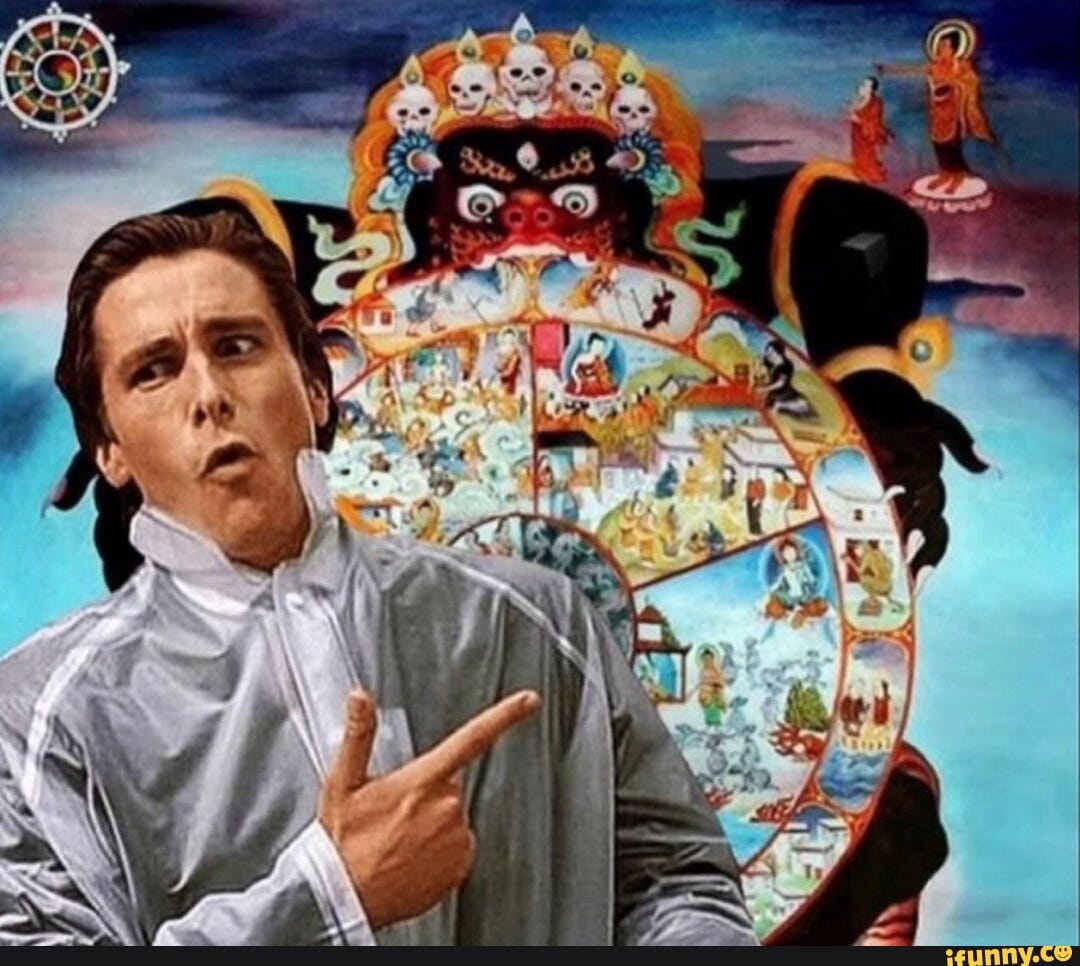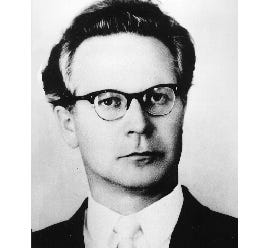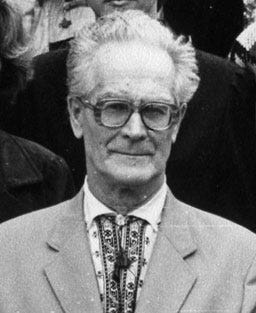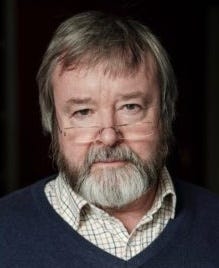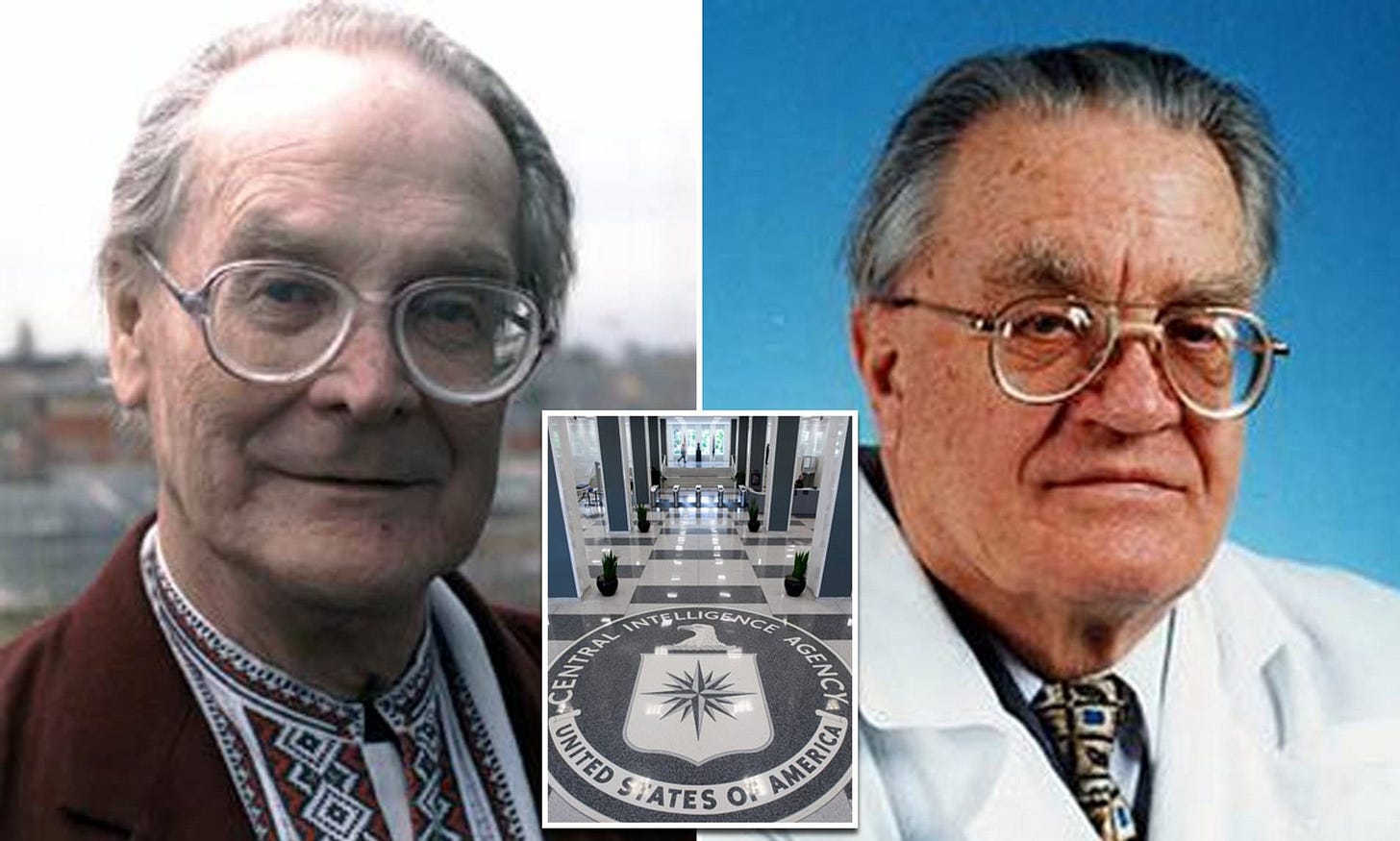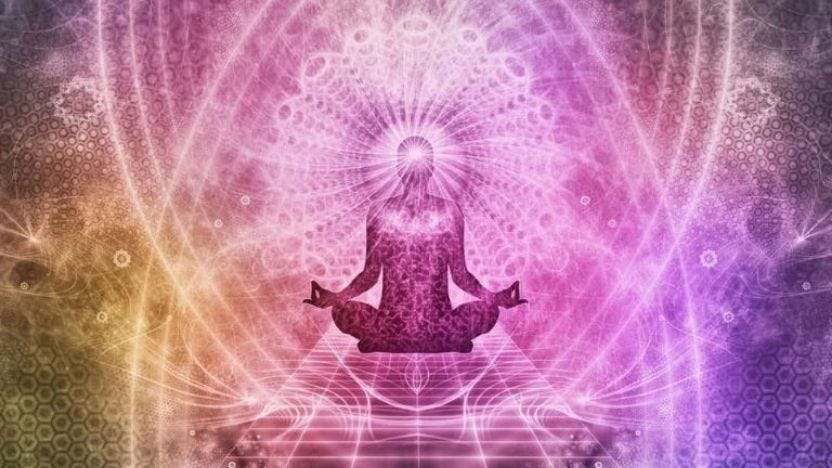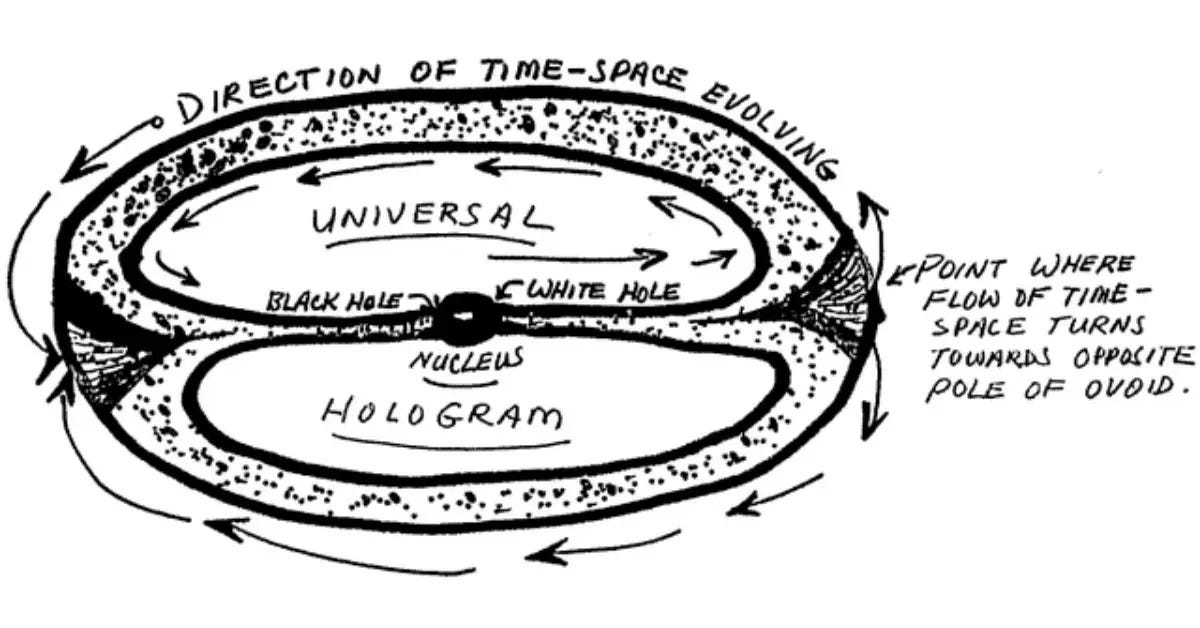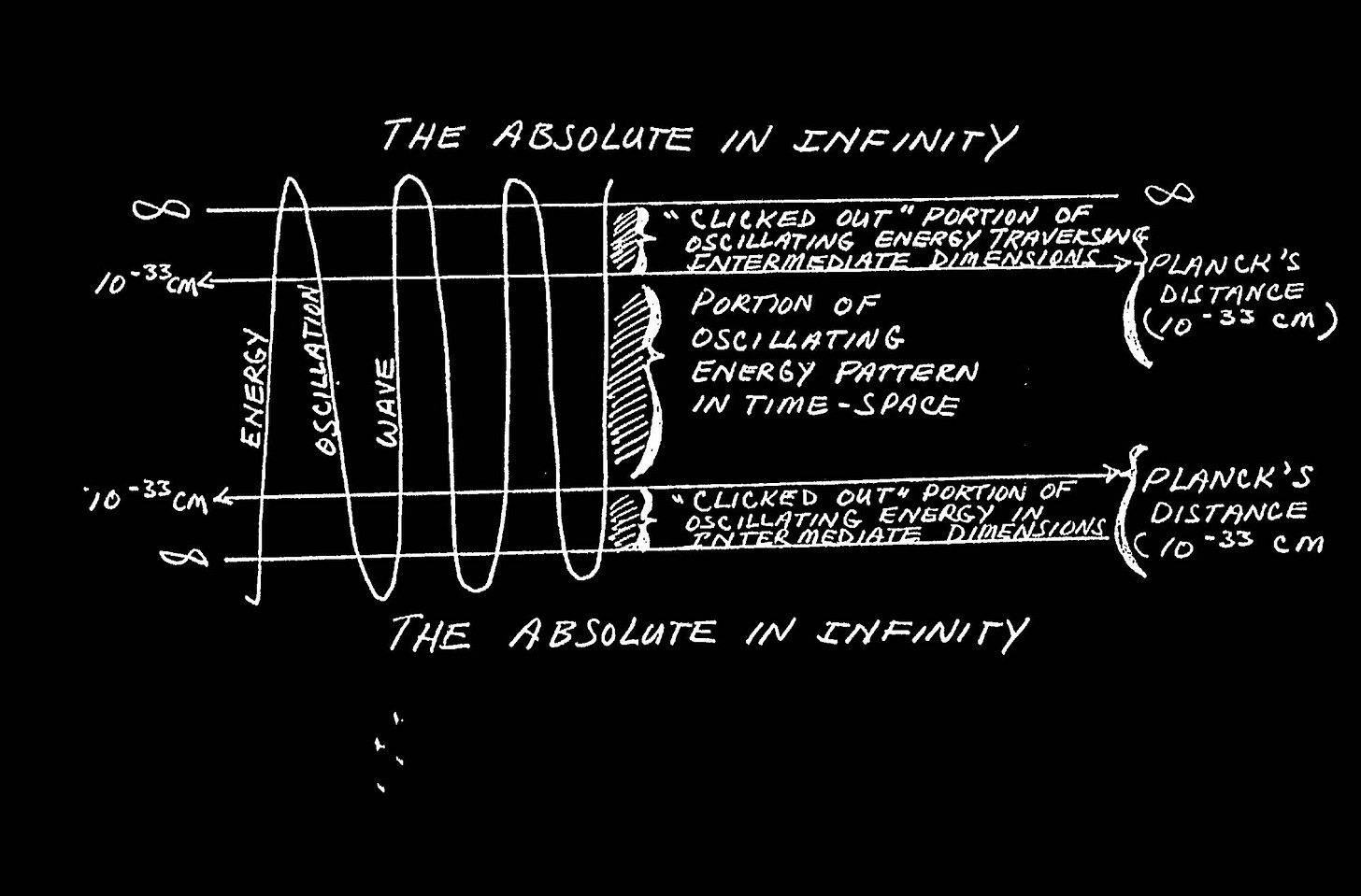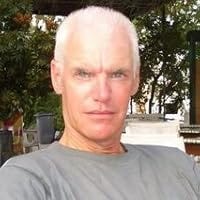This piece is far longer than what I typically write, but that’s because the subject matter, consciousness, physiology, mysticism, and the rediscovery of Eden, requires deeper excavation than a short article can offer. What begins as a discussion of the history and science of mouth breathing and oxygen unfolds into a multidimensional case for how we lost Paradise: not through disobedience, but through the collapse of the face, the hyperactivity of the left hemisphere, and the forgetting of breath as the bridge between body and soul.
From the Book of Genesis to Buteyko, from Julian Jaynes to the CIA’s psychic research, from Jung to pranayama to Project Stargate, this article explores how we fell from hemispheric integration, how we are still dreaming in the prison of discursive thought, and how we might yet remember the path back, breath by breath.
This is a map. A spell. A decoded myth.
Welcome to The Remembered Garden.
Therefore the LORD God sent him forth from the garden of Eden, to till the ground from whence he was taken.
So he drove out the man; and he placed at the east of the garden of Eden Cherubims, and a flaming sword which turned every way, to keep the way of the tree of life.
— Genesis 3:23–24 (KJV)
The cyclical cycle of discursive thought is the flaming, turning sword that guards the way to Eden. All that we need to do is see through the illusory nature of this flaming turning sword and relax out of thinking.
We stand at the edge of a mirror. On one side, the world we know: structured, linear, dissected, ruled by the cold clarity of the left hemisphere. It gave us machines, metrics, and models of the mind that behave like prisons. But on the other side lies something older, deeper, and vastly more alive: the right hemisphere, the ancient sovereign of wholeness, intuition, pattern, and presence. For centuries this hemisphere has been dismissed, ignored, or at best poeticized as a dreamy assistant to its more “rational” sibling. That was a mistake.
We are moving towards synthesis of what was lost, and in order to understand where we are going and how we can become conscious participants in the co-creation of Reality, we must remember where we started.
The Remembered Garden: Consciousness, Duality, and the Return to Wholeness
The Tree of the Knowledge of Good and Evil was the gateway to duality, the moment consciousness split the world in two. To eat of it was to awaken the left hemisphere’s power: distinction, division, judgment. In that moment, the seamless unity of the right hemisphere, the Edenic flow of presence, pattern, and interconnection, was cast into shadow. This was the Fall, not into sin, but into selfhood.
Just as a child must leave the oceanic wholeness of early life and pass through fragmentation to become an individual, so too did humanity begin its long journey of individuation. Jung saw this arc in the life of every person: first unconscious unity, then conscious division, and finally, if we are brave and blessed, the return, not to innocence, but to a higher wholeness. Eden is not behind us. It is an ever-present reality for those who have eyes to see, and a fully realized Planetary Paradise ahead from the perspective of the dimension of time.
How the Fall the Collapse of the Face: The Madness of Mouth-Breathing
Cursed is the ground for thy sake; in sorrow shalt thou eat of it all the days of thy life;
Thorns also and thistles shall it bring forth to thee; and thou shalt eat the herb of the field;
In the sweat of thy face shalt thou eat bread, till thou return unto the ground; for out of it wast thou taken: for dust thou art, and unto dust shalt thou return.
— Genesis 3:17–19 (KJV)
That’s not just divine reprimand; it’s an encrypted message describing the shift from the wild freedom of the hunter-gatherer world to the anxious toil of agriculture. The Fall wasn’t about disobedience, it was about domestication. We didn’t get kicked out of Eden so much as we plowed it under. When we began planting grain, we didn’t just grow food, we grew worry, hierarchy, and the deep need to categorize and control. Agriculture dramatically changed our bodies, especially our faces, and this change in our facial structure radically changed how our brains worked.
The Fall wasn’t just moral. It was physiological.
It crept in through the jaw, the breath, the skull.
Our faces fell into mouth breathing.
Jaws of Life and Death
The book Jaws: The Story of a Hidden Epidemic, by Sandra Kahn and Paul R. Erlich, drops the bomb most people still haven’t heard: our skulls are collapsing. Since the agricultural revolution, the human face has shrunk dramatically, narrower palates, smaller nasal passages, recessed chins. This isn’t evolution. It’s devolution.
Why?
Because our ancestors, wild, free, pre-agricultural humans, used to chew hard food, breathe through their noses, and develop robust facial structures. They had perfectly straight teeth and no cavities, before mouthwash, floss, and toothbrushes.
But then came soft food, sugar, sedentary life, and with it, open mouths, crooked teeth, and underdeveloped jaws.
The result? Collapsed airways. Poor oxygenation. Brain fog. Anxiety.
A subtle, slow-motion Fall, not from God, but from good breathing mechanics.
Kahn and Erlich bring the scientific receipts to demonstrate that mouth breathing is linked to a significant increase in risk for nearly all the most common chronic illnesses such as cancer, heart disease, diabetes, a variety of so-called mental illnesses, and many more.
But they were not the first westerners to figure this out.
Shut Your Mouth and Save Your Life
In the 1800s, George Catlin, a lawyer-turned-Native-American-enthusiast, traveled across the continent documenting indigenous tribes. What he found were people with beautiful faces, with perfectly straight teeth, despite the lack of dentists and orthodontists. These peoples were extremely healthy in mind and body.
Catlin reported that in the tribes he visited who still lived their traditional lifestyle, children never died in childbirth and very rarely of disease, at a time when one in four European colonists reached the age of twenty-five. It didn’t take him long to figure out why the indigenous people were so much healthier than the colonists.
It was their mouths. They were closed. Almost always. Their smiles were close-mouthed, and they spoke very little. Mothers paid special attention to making sure their children kept their mouths closed at night, some tribes even employed headboards to keep the children’s mouths closed during sleep. When Catlin asked about these practices, the mothers told him it was to ensure good looks, and good health. They told him evil spirits can enter through the open mouth.
At the time Catlin began his travels he about forty years old and had been sick much of his life. He was coughing up blood at the time. After he made the connection between mouth breathing and illness, he created an ad hoc cloth chin strap to keep his mouth closed at night.
Catlin made a rapid recovery and later stated that in his fifties he felt much more vital and energetic than when he had been a young man. The experience was so life changing he decided to write a book with the hilariously blunt title: Shut Your Mouth and Save Your Life.
His message: people who breathe through their mouths get sick. They die early. They go mad. Catlin didn’t have a PhD, but he was right. Modern science is finally catching up. And it’s horrifying.
The Fall Was Into the Face
“All chronic pain, suffering, and disease is caused by a lack of oxygen at the cellular level.”
—Arthur Guyton, father of modern physiology
There it is. The medical Rosetta Stone. That line is in the world’s bestselling medical textbook, The Textbook of Medical Physiology. Every doctor you’ve ever seen read it… and forgot it. The book was written by a towering figure of modern medicine. Let me emphasize: the root cause of chronic illness is hiding in plain sight, in the world’s most widely used medical textbook. The Fall from paradise wasn’t myth. It was metabolic.
Guyton understood what few remember: oxygen is the final electron acceptor in the mitochondrial electron transport chain. Without adequate oxygen, your mitochondria can’t produce ATP efficiently. Instead of running on clean-burning cellular respiration, your cells switch to anaerobic glycolysis, primitive, dirty, and inflammatory. This creates lactic acid, oxidative stress, and mitochondrial dysfunction, all of which signal the body to panic. Chronic pain, fatigue, brain fog, depression, they all trace back to this collapse in cellular respiration.
When you breathe too much, you lose CO₂, and when you lose CO₂, you lose oxygen. This might sound backward, but it’s pure physiology: according to the Bohr effect, carbon dioxide is essential for oxygen to be released from hemoglobin into your tissues. CO₂ lowers blood pH slightly, signaling hemoglobin to let go of its oxygen cargo where it's needed most. Without enough CO₂, hemoglobin holds on too tightly, and oxygen doesn’t reach your cells, even if there’s plenty in your blood. So over-breathing doesn’t oxygenate you; it suffocates you, one silent breath at a time.
Think about that the next time someone tells you to take a deep breath.
When you lose oxygen, your cells panic. Your body inflames. Your mind spirals. Your soul gets quiet. You lose Eden, not through sin the way we think of it, but in the original meaning of the word: you miss the mark. You miss the mark because your mind is lost in thought.
Cortical Anarchy: When the Brain Thinks Without You
Now let’s get deeper into the wiring.
I’m going to go over the importance of carbon dioxide from the technical perspective once more because it bears repeating. Carbon dioxide gets a very bad rap in our culture, but it is absolutely essential for life.
When you chronically overbreathe, especially through the mouth, and especially at night, you blow off too much carbon dioxide. And that’s not just a gas exchange problem. CO₂ is what allows oxygen to actually reach your cells. Without enough CO₂, you can be “oxygen rich” in the lungs and blood but starving at the cellular level. This is known as the Bohr effect: hemoglobin holds on tighter to oxygen when CO₂ levels are low, meaning the oxygen can’t detach and enter your tissues where it’s needed most. So it doesn’t matter what your pulse ox reads if that oxygen never makes it through the door. Your blood can be fully saturated and your body can still be suffocating, from the inside out.
Nowhere is this more disastrous than in the brain.
“Breathing too much makes the human brain abnormally excited due to reduced CO₂ concentrations. As a result, the brain gets literally out of control due to the appearance of spontaneous and asynchronous (‘self-generated’) thoughts.”
— Normal Breathing: The Key to Vital Health
Let’s decode that:
If you’ve ever felt your thoughts racing, looping, spiraling into nonsense or anxiety
that wasn’t “you.” That was your cortex misfiring. Overthinking is physiological, and the cause is breathing too much. Remember that next time you hear the wildly bad “common sense” advice to “take a deep breath.”
Think about it. When someone’s upset, sad, angry, or having a panic attack, how are they breathing? Heavily. When someone is calm and relaxed, can you see or hear their breathing? Obviously not. The more you breathe, the more it causes what the medical literature describes as:
“Spontaneous and asynchronous firing of cortical neurons”
—Balestrino & Somjen, 1988
In normal terms: your neurons are firing like a pack of caffeinated toddlers with paintball guns. Thoughts arise not from intention or will, but from random noise, a chaos engine in your skull.
And here’s the kicker:
“The brain, by regulating breathing, controls its own excitability.”
—Balestrino & Somjen, 1988
Yes, your breath is how your brain regulates its thinking. How you breath determines sanity or madness. This is precisely how it is understood in the Eastern spiritual and medical traditions: the breath is a mirror to the mind.
Relaxed, subtle breathing leads to total control of the mind. You can choose to think or not think at will. A mind that breathes too much has no control over thought at all. All mental illness is uncontrolled thinking, and as such nearly everyone alive is mentally ill.
Rule your mind, or it will rule you. - Horace
And your mind won’t just rule the you that you normally think of as you. It rules your external reality too. Remember, your world is a mirror, and your external reality is a projection of your mind and a reflection of your thoughts.
“The breath is a mirror to the mind.” - Paul Harvey, Center for Yoga Studies
If the breath is a mirror to the mind, and the world is a mirror of the mind, then the breath is the mirror of the world. When you master breath control, you gain control over your mind, and when you gain control over your mind, you have overcome the world.
This is what I call: Breath Based Reality Selection
“We are what we think, all that we are arises with our thoughts, with our thoughts we make the world.” - Buddha
Without enough CO₂, your default mode network goes haywire. Your thoughts get louder. Faster. More fragmented. This isn’t just overthinking and emotion dysregulation. This is all forms of compulsive thought and overactive emotion: overwhelming anxiety, irritation, envy, and anger as neuroelectrical malfunction.
And it gets worse.
“The constriction of the carotid artery is estimated to be as much as 50% in those with anxiety and panic attacks.”
—Gibbs (1992), Ball & Shekhar (1997)
Fifty percent.
That’s half the blood flow to your brain, squeezed like a garden hose, because your breathing is shallow, fast, and panicked.
Carbon dioxide is also a vasodilator, so when you your levels are low, blood flow is constricted in the entire body, and especially the brain. Half as much blood, plus hemoglobin can’t release its oxygen payload into the cells.
This is the physiological mechanism of the Fall.
Not original sin, but original brain spasm: the spontaneous and asynchronous firing of cortical neurons leading to uncontrolled discursive thought. Mentally labeling everything, particularly the dualistic labeling of self and other, good and evil, is the fruit of the tree of knowledge of good and evil.
Uncontrolled mental labeling is what turned Paradise into what Philip K Dick called the Black Iron Prison. That’s why the great Dzogchen scholar-practitioner, Longchenpa, summed things up succinctly when he said:
“Samsara consists of discursive thought.”
It’s that simple. The prison bars are made of thoughts. AgroCiv didn’t just colonize land, it colonized our minds with concepts. Our ancestors didn’t experience repetitive, egoic, left hemisphere discursive thought. Unlike us, they didn’t go around mentally labeling everything, judging themselves and others, internally complaining about situations and worrying about the future, cutting all of reality up into separate pieces.
Dr. Konstantin Buteyko: The Mechanic of Breath
Before he became the Soviet Union’s foremost expert in respiratory physiology, Konstantin Buteyko was just a boy who could fix anything.
Engines, clocks, radios, if it had parts, he could take it apart, understand it, and bring it back to life. He saw the world as a system of systems, each with its own logic. During the war, that talent kept him alive. He served not with words or weapons, but with his hands and his mind, keeping the machines running as bombs fell and nations bled.
But when the smoke cleared, something shifted. Buteyko, now a young man, found himself bored with machines. They obeyed too easily. They didn’t suffer. They didn’t die. They didn’t dream. And so, with the same analytical curiosity he once applied to engines, he turned his attention to the most complex system of all: the human body.
It was while studying terminal patients that he noticed something strange—those closest to death were always breathing the hardest. It didn’t make sense. More breath should mean more life. But it didn’t. So he followed the riddle backward, into the lungs, into the blood, into the cells.
And what he found was revolutionary: the key to healing wasn’t breathing more, it was breathing less to retain more carbon dioxide.
Through what would become known as the Buteyko Method, he discovered that CO₂ is not a waste gas but a master regulator. It dilates blood vessels, calms the nervous system, and, most crucially, enables the Bohr Effect—the mechanism by which hemoglobin releases oxygen to hungry tissues. Without enough CO₂, oxygen stays bound in the blood, useless. You suffocate while you breathe.
This insight changed everything.
The Soviet state noticed. Buteyko was elevated rapidly. He became the head of respiratory research for the Soviet space program. He trained cosmonauts, Olympic athletes, elite soldiers, and even operatives in the KGB. Wherever peak performance was demanded, Buteyko was summoned. He taught not strength or stamina, but breath control. CO₂ retention. Silent breathing. Mitochondrial optimization.
And yet, outside the Iron Curtain, he was dismissed for decades as a crank.
But those who knew, knew: the breath controls the brain, the body, and the will.
Buteyko wasn’t just treating asthma or anxiety. He was mapping the interface between physiology and consciousness. Teaching that too much breathing—like too much thinking, makes the system unstable. That calm, silent breath was the secret to cellular power, emotional resilience, and inner stillness.
He saw what others missed.
He saw that healing the world might begin with simply closing the mouth.
He also realized that he had merely rediscovered, and redefined through the lens of western science, something that had been known for thousands of years:
Before telling you about the basic concept of the method, I would like to emphasize that I describe medicine generally in two directions. One direction is the so-called official Western. The other, Eastern medicine. It has transpired that the truth is on the side of the Eastern medicine which has always stated that diseases occur as a result of diseased breathing.”
-Dr. Konstantin Buteyko
Julian Jaynes and the Breakdown of the Inner Oracle
Now enter Julian Jaynes, the psychologist who proposed that ancient humans once operated under a “bicameral mind”, a divided brain, where the right hemisphere spoke in commands, and the left followed orders. This, he argued, was the origin of divine voices, prophecy, and mythic consciousness.
But the system broke down, as agriculture progressed, the jaw collapsed, breathing increased and the left brain took over. The divine right hemisphere voice fell silent. The ego was born.
Jaynes called this the “breakdown of the bicameral mind.”
We call it modern consciousness.
Jaynes told us the left brain hijacked the signal.
Modern science shows us that bad breathing hijacks the antenna.
The result? A species trapped in its own head, drowning in unwanted thoughts, severed from its own inner voice, starved of oxygen, and mistaking noise for identity.
The Master Forgets Himself: McGilchrist and the Exile of the Right Brain
If Julian Jaynes gave us the map of the mind’s collapse, then Iain McGilchrist gave us the evidence-based morality tale. His work weaves together an immense body of scientific research, spanning neuroscience, psychology, philosophy, and the arts, with rare depth and coherence, offering not just quantity but a breathtaking quality of insight.
In The Master and His Emissary, McGilchrist tells the story of two hemispheres: the right brain, the Master, holistic, embodied, intuitive, present, and the left brain, the Emissary, clever, analytic, grasping, self-referential. The left hemisphere was meant to serve, to carry out the will of the Master. But somewhere along the way, the servant declared himself king.
The kingdom fell, and it fell because the emissary divided it into countless pieces.
These are notions of the mind, which is like a knife, always chipping away at the Tao, trying to render it graspable and manageable. But that which is beyond form is ungraspable and that which is beyond knowing is unmanageable. There is, however, this consolation: She who let’s go of the knife will find the Tao at her fingertips.”
- Lao Tzu
In terms of The Master and His Emissary, this reflects the left hemisphere’s tendency to grasp, control, and reduce the infinite to manageable pieces, while the right hemisphere approaches reality with empathy, interdependence, and a holistic sense of understanding that comes through letting go.
In the context of Genesis, this wasn’t just metaphor. This was the Fall. Not from innocence, but from integration, from hemispheric coherence. We left the Garden the moment the Emissary seized the throne, the moment we stopped hearing the voice of God whisper through the trees of our nervous system and started trusting only the voice in our heads, the accountant, the inner bureaucrat, the voice of constant measurement and control, dividing all of reality into self and other, good and evil.
McGilchrist doesn’t romanticize the right hemisphere; he reveres it. It’s the hemisphere of living connection, the part of us that feels music instead of analyzing time signatures, that sees a face instead of a list of features, that knows the world directly without stuffing it into a spreadsheet. And it depends on breath. On rhythm. On presence. On silence.
You can’t hear the Master when you’re overbreathing.
Because the Emissary thrives on noise. The more you huff and puff, the more your cortex lights up like Vegas, thoughts ricocheting like a pinball machine, dopamine loops craving novelty, certainty, control. In that chaos, the right hemisphere, the Master, goes quiet. Not gone. Just drowned out by the static.
So here’s the bitter joke: the Garden wasn’t destroyed. It was muffled. Buried under breathless thought and jaw tension and the tinnitus of unchecked cognition. We didn’t lose Eden, we just can’t hear it anymore.
The good news? You can start to hear it again.
Because the Master is still speaking, but only in the silence between your thoughts.
We fell into time, we fell into duality, but most literally, our faces collapsed, and we fell into hyperventilation, and completely uncontrolled thinking
The way back? Close the mouth, slow the breath, and reclaim CO₂. Reopen the temple of the right brain. Remember how to hear yourself again.
Next, we’ll discuss precisely how to do that.
“If they put a stop to conceptual thought and forget their anxiety, the Buddha will appear before them, for this Mind is the Buddha and the Buddha is all living beings.”
- Huang Po
In the modern world, due to the physiological Fall, the breath tightens and the mind spins, the world outside distorts, not with fire and fangs, but with endless emails, corporate incantations, sitcom-level family drama, and romantic whiplash. The nightmare can take many forms, politics, parenting, soul crushing work and the Sunday Scaries, but the structure is always the same: a chaotic mind reflecting back a monstrous world. The real horror isn’t the dream, it’s forgetting you’re the one dreaming it up.
CIA Psychic Spies and Siddhis
Now, the evidence is converging. From CIA documents to neurosurgical revelations, from ancient mysticism to quantum theory, a new synthesis is emerging. What follows is not mysticism dressed in science, but science rediscovering the mystic's map. We will make an evidence-based case for the supremacy, not domination, but centrality, of the right hemisphere in accessing reality as it truly is. This is not about rejecting reason, but dethroning its tyrannical impersonation. It’s time to remember the brain’s original order. Let’s begin by backtracking a little, to Dr. Buteyko and to what the CIA had to say about his breathing method.
A declassified 1991 CIA memo reveals that U.S. intelligence officials believed Soviet researchers had perfected ESP, developing techniques to unlock extrasensory perception through methods such as mirrored chambers, bioenergetic training, and controlled breathing. The document describes experiments in which Russian volunteers reportedly accessed hidden psychic abilities, including influencing biological systems and transmitting information across distance, phenomena strikingly similar to remote viewing and energy healing. Some of these methods appear to align with principles found in the Buteyko breathing method, which emphasizes reduced respiration to alter consciousness and physiological function.
Through the Bohr effect, Buteyko’s reduction of breath increases carbon dioxide levels in the blood, which in turn enhances oxygen delivery to the brain. This improved oxygenation, particularly to the deeper and more ancient structures of the brain, fosters hemispheric coherence, reducing activity in the overactive, analytical left hemisphere and allowing the intuitive, holistic capacities of the right hemisphere to emerge. In this way, Buteyko is not merely a respiratory therapy but a gateway to altered states of awareness, potentially awakening the latent faculties of ESP described in the CIA’s report. The memo underscores Cold War-era concerns that the Soviets were exploring the mind’s latent capacities not just for health, but as a tool of intelligence and warfare.
Buteyko’s method very closely aligns with the original version of ancient Indian pranayama, as opposed to the pranayama taught in yoga studios today. These ancient texts state that pranayama has the extraordinary ability to cure any illness, which makes sense when seen through the lens of one of my favorite quotes:
“All chronic pain, suffering, and disease is caused by a lack of oxygen at the cellular level.”
—Arthur Guyton, father of modern physiology
The ancient sutras on pranayama also describe the development of psychic abilities, which we now know through the lens of modern science are a result of hemisphere synchronization allowing access to right hemisphere perception, facilitated by high levels of carbon dioxide tolerance. This convergence of esoteric tradition and physiological insight has become a growing area of academic study.
Magdalena Kraler is a scholar of religion in the field of modern yoga studies, with a focus on transnational physical culture, subtle body traditions, and alternative spiritual movements. Her forthcoming book, Yoga Breath (2025), explores the development of yogic breath practices, investigating how breath was reimagined as both a spiritual and physiological force in modern yoga.
In her dissertation, Kraler offers a detailed examination of prāṇāyāma through the lens of breath retention and carbon dioxide physiology. She highlights how classical yogic texts emphasized kumbhaka (breath retention) not as an optional or secondary technique, but as central to the transformational power of yogic breathing. Drawing on both traditional sources and modern respiratory science, Kraler explains how increased CO₂ tolerance may quiet the mind, stabilize attention, and induce altered states of awareness. While maintaining a critical and scholarly tone, she also traces how ancient texts such as the Haṭhapradīpikā, Śivasaṃhitā, and Dattātreyayogaśāstra consistently link advanced breath control to the emergence of siddhis—extraordinary abilities such as heightened perception or mastery over bodily processes. Rather than affirming these claims as empirical realities, Kraler presents them as meaningful elements within the historical yogic imagination, tied to specific psycho-physiological practices.
Project Stargate and the Missing Page
The Gateway Process was part of a classified U.S. military program exploring altered states of consciousness for practical applications in intelligence gathering, commonly known as remote viewing. Developed by the Monroe Institute and integrated into the broader Project Stargate initiative, it used sound frequencies and meditative techniques to induce deep states of awareness. Subjects reportedly accessed information across time and space, producing accurate remote viewing data that proved useful for intelligence operations. Though officially declassified and discontinued, many believe the research quietly continued. The popular series Stranger Things is loosely based on Project Stargate, drawing inspiration from its experiments with psychic children, government secrecy, and interdimensional contact.
At the center of this research is the Gateway Process report, officially titled Analysis and Assessment of Gateway Process, written in 1983 by U.S. Army Lieutenant Colonel Wayne M. McDonnell. Commissioned by the Army’s Intelligence and Security Command, the report examined the Monroe Institute’s methods for inducing altered states using sound technology. McDonnell brought a rigorous analytical approach, attempting to reconcile metaphysical experiences, such as out-of-body travel, remote viewing, and interaction with nonlocal information fields, with established theories in physics, neuroscience, and systems analysis. The result was a striking document that became a cornerstone within Project Stargate, offering a bridge between mysticism and military science.
For years, however, one page of that report remained missing: Page 25. Its absence sparked widespread speculation. Some believed it held the key to consciousness itself, the mechanics of how perception shapes reality. When the page finally resurfaced, it confirmed a profound idea: that modern science, anchored in left-brain logic, is only beginning to rediscover what ancient mystics accessed through right-brain intuition. What follows is a concise summary of that long-lost insight.
Here’s what page 25 says:
35. Left Brain Limitations. Twentieth Century physics would seem to be revisiting insights belonging to mankind as far back as written records can take us. The only difference is that Twentieth Century physics is using a left brain, linear, quantitative style of reasoning to approach the same knowledge which the mystics apparently acquired in a holistic, intuitional, right brain style. As a tool in the hands of our left brain culture, Gateway would seem to be a promising method for achieving the intuitive, holistic-type of interface with the universal hologram needed to provide the context that thinkers like Einstein have sought in their labors to discover a unified field theory in physics. For persons involved in professions whose concerns revolve around strategic issues, tactical questions and matters of managerial form and system, access to a new world of intuitive perception, self reflection would seem to offer, in the long term, the means by which to arrive at a truly objective way. This is so because the self-imposed limitations to balanced perception and objective logic which our left and personal psychological subjectivity imposes when we use the strictly literal brain thinking style could be offset by the holistic form of perception associated with altered states of consciousness. To the extent that we come to perceive ourselves fully in the context of that portion of the universal hologram which is the reflection of ourselves, to that extent we release ourselves from the prison of subjectivity.
36. Self Knowledge. It was axiomatic to the mystic philosophers of old that the first step in personal maturity could be expressed in the aphorism: “Know thyself.” To them, the education of a man undertook, as its primary step, achievement of an introverted focus so that he learned what was within himself before attempting to approach the outside world. They rightly assumed that he could not effectively evaluate and cope with the world until he fully understood his personal psychological balance. The insights being provided by Twentieth Century psychology in this context through the use of various kinds of personality testing seem to be a revalidation of this ancient intuition. But no personality test, or series of tests, will ever replace the depth and fullness of the perception of self which can be achieved when the mind alters its state of consciousness sufficiently to perceive the very hologram of itself which it has projected into the universe in its proper context as part of the universal hologram in a totally holistic and intuitional way. This would seem to be one of the real promises of the Gateway Experience from the standpoint of its ability to provide a portal through which, based on months if not years of practice, the individual may pass in his search to find self, personal effectuality, and truth in the larger sense.
The ancient command to “Know thyself” was never about analysis alone. True self-knowledge begins when the left hemisphere releases control and the right takes the lead. While science dissects, mystics perceive directly through intuitive awareness. The Gateway Process offers a glimpse of this by inducing altered states that temporarily synchronize the brain’s hemispheres. But in the great mystical traditions, spiritual practice turns this temporary state into a stable state, making hemispheric harmony a living reality. Only then do we see ourselves not as separate minds, but as reflections of the whole.
Page 25 of the CIA Gateway Process document points to a striking conclusion: twentieth-century science, through quantum theory and holographic models of reality, is brushing up against ancient mystical insights. It hints that the left brain—our linear, analytical emissary, cannot grasp what the right brain already knows: that consciousness is layered, recursive, and fundamentally non-local. This sets the stage for Anthony Peake’s provocative claim in The Daemon: A Guide to Your Extraordinary Secret Self, that we are not one, but two.
According to Peake, the self we usually identify with, the eidolon, is a kind of biological avatar, bound by time and memory, moving moment by moment through life with no awareness of its greater context. But behind it exists the daemon, a higher-dimensional observer, a more complete self that remembers previous lives, sees across timelines, and subtly guides the eidolon through hints, synchronicities, and déjà vu.
Peake’s theory is not built on wishful mysticism, but on a compelling convergence of disciplines. He draws on detailed neurological studies of temporal lobe epilepsy (where patients report heightened perception, precognition, and life reviews), documented accounts of near-death experiences, cases of verifiable precognitive dreams, and the physics of the Bohmian implicate order. He references Penrose-Hameroff’s theory of consciousness in microtubules, the Many-Worlds Interpretation, and even the bi-cameral mind theory of Julian Jaynes. Taken together, these point to a split in selfhood that maps neatly onto the hemispheric divide: the eidolon as the left-brain narrator, the daemon as the right-brain witness.
This higher self, the daemon, may be replaying your life in loops. Each run is an opportunity to guide the eidolon a little closer to awakening. Déjà vu, uncanny recognition, dreams that seem more real than waking life, these are not just flukes. They are bleed-through from the daemon’s broader temporal awareness. Its guidance is subtle but unmistakable, like a psychoenergetic field adjusting probabilities in the eidolon’s favor.
In the Chinese alchemical text, The Secret of the Golden Flower, this split is described as Po and Hun—the bodily, death-bound soul and the heavenly, enduring one. In Western esotericism, it's the ego and the Guardian Angel. In Kabbalah, the serpent that rises from below and the dove that descends from above. Peake shows that these dualities are not just archetypal—they’re embedded in the structure of consciousness itself.
And crucially, the daemon is not static. It learns. It evolves across lifetimes. It doesn’t override your choices, but it arranges the stage. It cannot command, but it can call. Through symbols, dreams, strange coincidences. Through intuition. Through memory that shouldn’t be possible, but is.
The modern world trains us to dismiss this. Peake teaches us to recognize the signal behind the noise. The daemon is not a metaphor. It is a literal component of consciousness—one that scientific and experiential data are beginning to corroborate.
We are not lost. We are guided. Not by fate, but by the part of us that remembers what we came here to do.
Next, we’ll explore the Way back to Eden.




